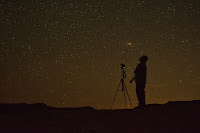Introduction and Monthly Reminders
May was another month for crazy Utah weather. Northern Utah experienced a few days with temperatures in the 70s and 80s, although some strong winds accompanied these days. Utahns also experienced rainy days in the 50s and 60s. The current weather forecast predicts more rain for the next couple of days, but also shows climbing temperatures and clearing skies. Great for astronomy! Aside from catching glimpses of the bright planets and constellations, the weather didn't permit much stargazing.
During the second half of May, observers can expect to see the Moon passing close to Venus, Jupiter, Saturn, and Neptune. Mercury will reach superior conjunction with the Sun on the 29th, being lost from view but returning in June. Venus will reach its greatest western elongation on the 31st, high above the horizon before sunrise.
Space Weather
Utah has been experiencing some crazy weather patterns over the past several weeks. This is a good time to talk about the weather in space! As one may have guessed, Space weather is quite different from the weather we experience here on Earth.
The term "space weather" might be misleading to some, but it refers to the area between the Sun and the Earth and the impact this region has on human technology and the Earth. Space weather is caused by the Sun releasing charged particles known as the solar wind. These charged particles contain kinetic energy measured in electron volts (eV). Not EV as in electric vehicle. When the Sun reaches its solar maximum cycle, as it is currently, it releases more of these charged particles. When these particles interact with a planet's atmosphere, they can release their energy, creating different colors in the sky, known as aurora. The Earth is not the only planet to have aurora. They have also been seen on Mars, Jupiter, Saturn, and Neptune.
In addition to creating pretty lights in the sky, solar weather can have an adverse effect. The solar wind interacts with all forms of technology. Satellites orbiting the planet can be overrun with these charged particles, temporarily disrupting ground communication and, in extreme instances, permanently damaging the satellite so it can no longer be used. The affected satellites can cause navigation errors on Earth and TV and cell phone outages. Astronauts aboard the ISS and individuals on aircraft will experience higher radiation levels during intense solar storms. On the planet's surface, we may experience geomagnetic induced currents in our power systems, disrupting the power that we heavily rely on. Solar cells, which have come a long way in technology, can also degrade more quickly during high solar activity. It seems that nothing is safe from space weather and the solar wind. This is mainly true outside of the protective layer that the Earth's atmosphere provides. It's only the powerful solar storms that humans need to worry about on the planet's surface. More information about Space Weather and its current forecast can be found on the Space Weather Prediction Center website of the National Oceanic and Atmospheric Administration.


No comments:
Post a Comment